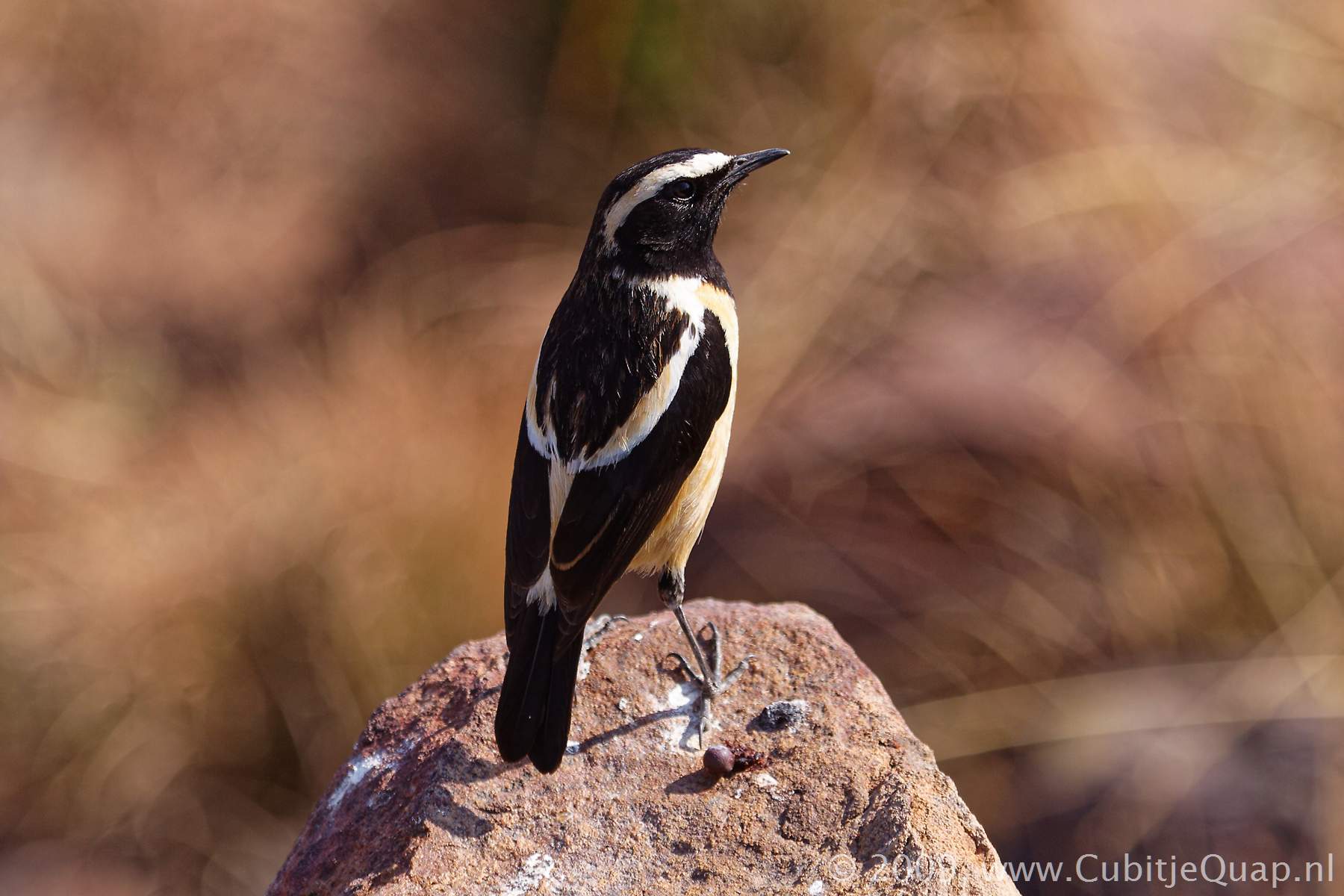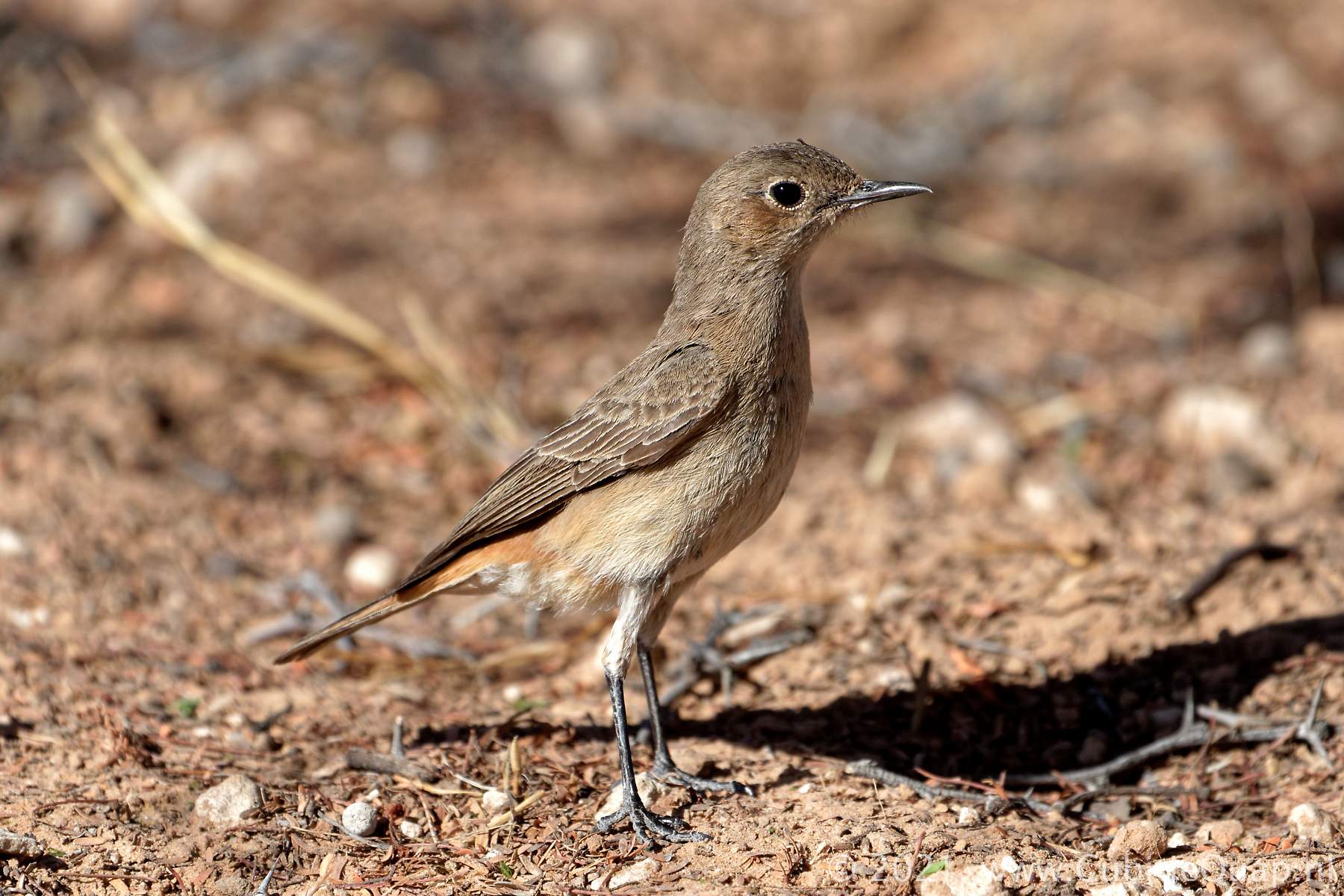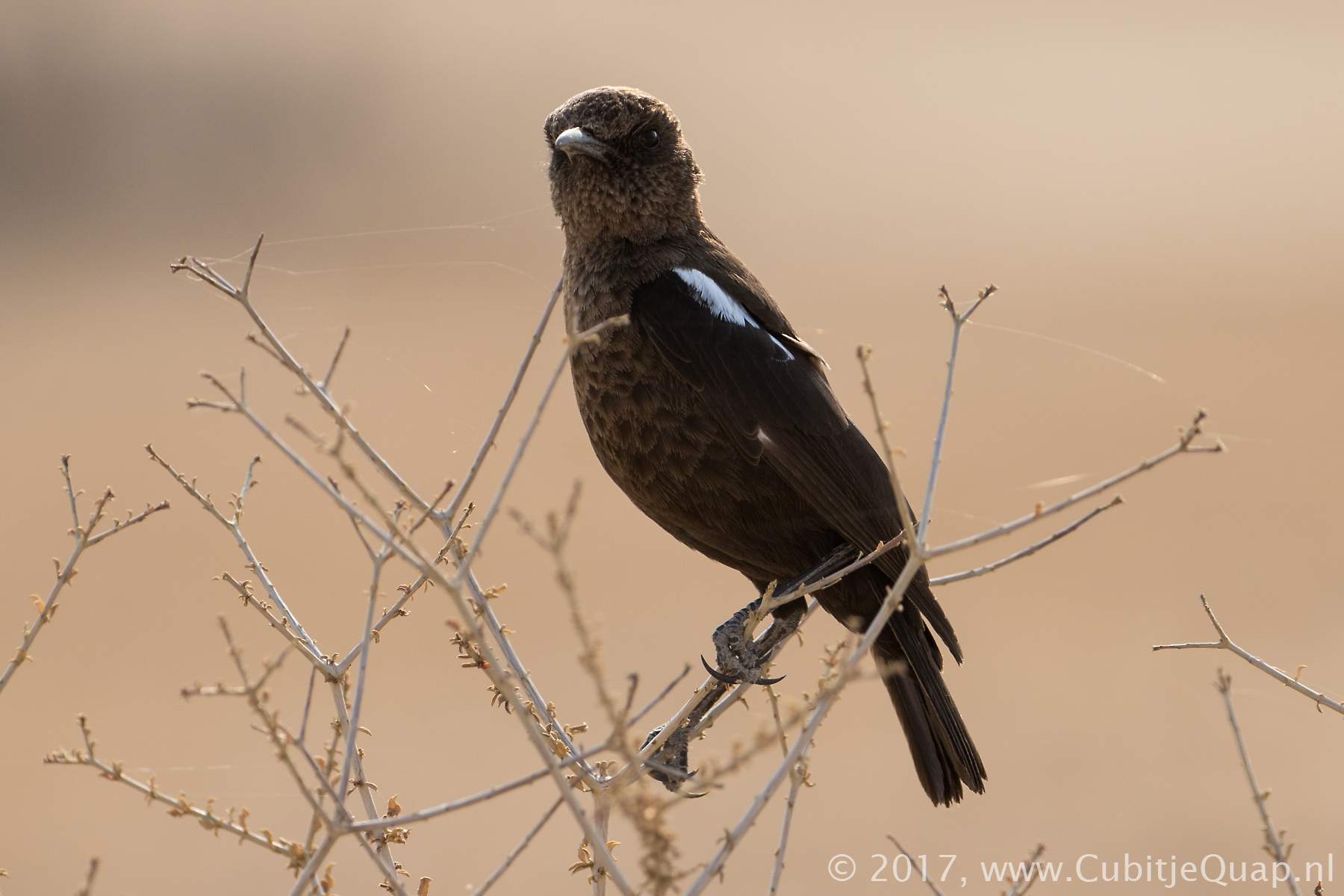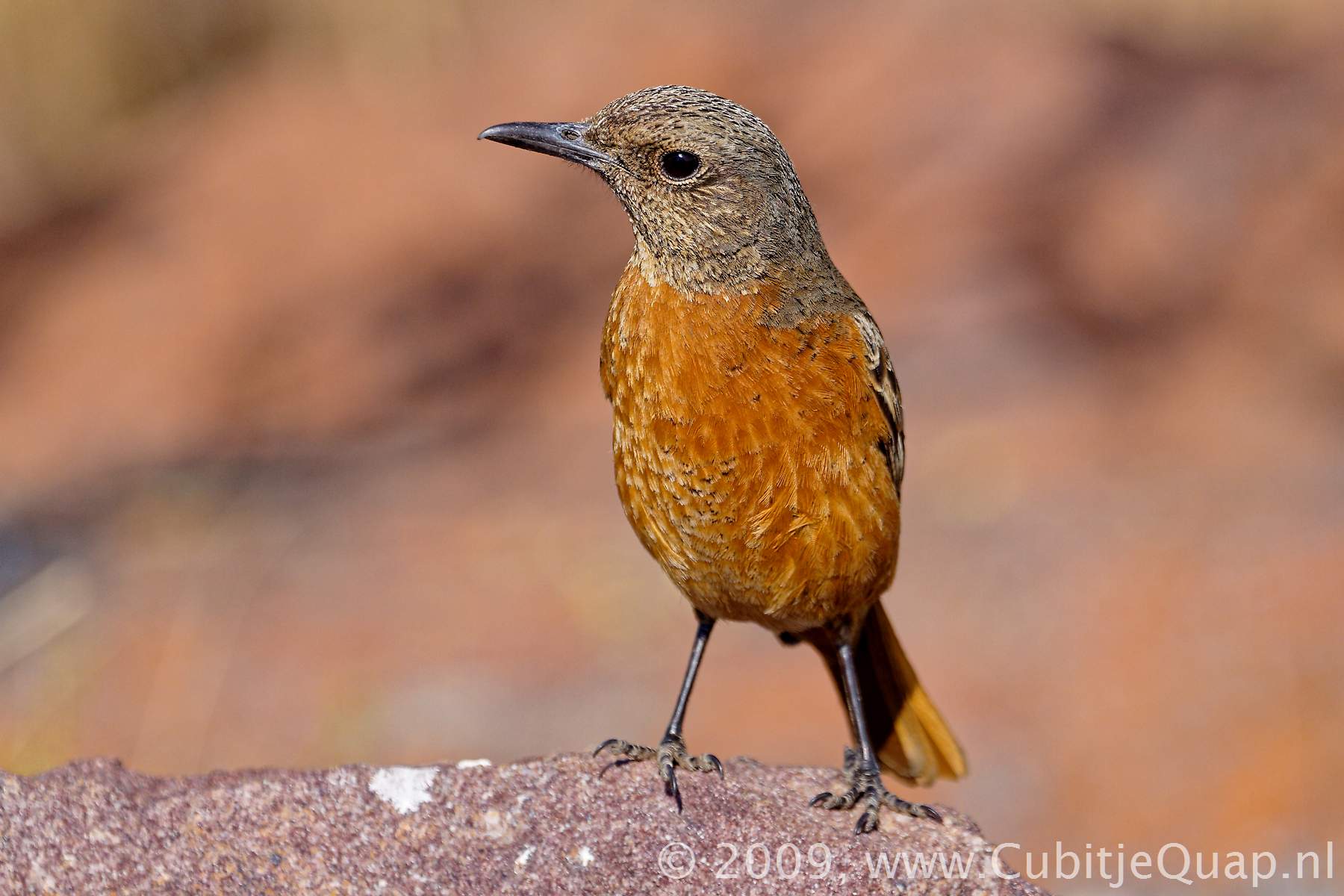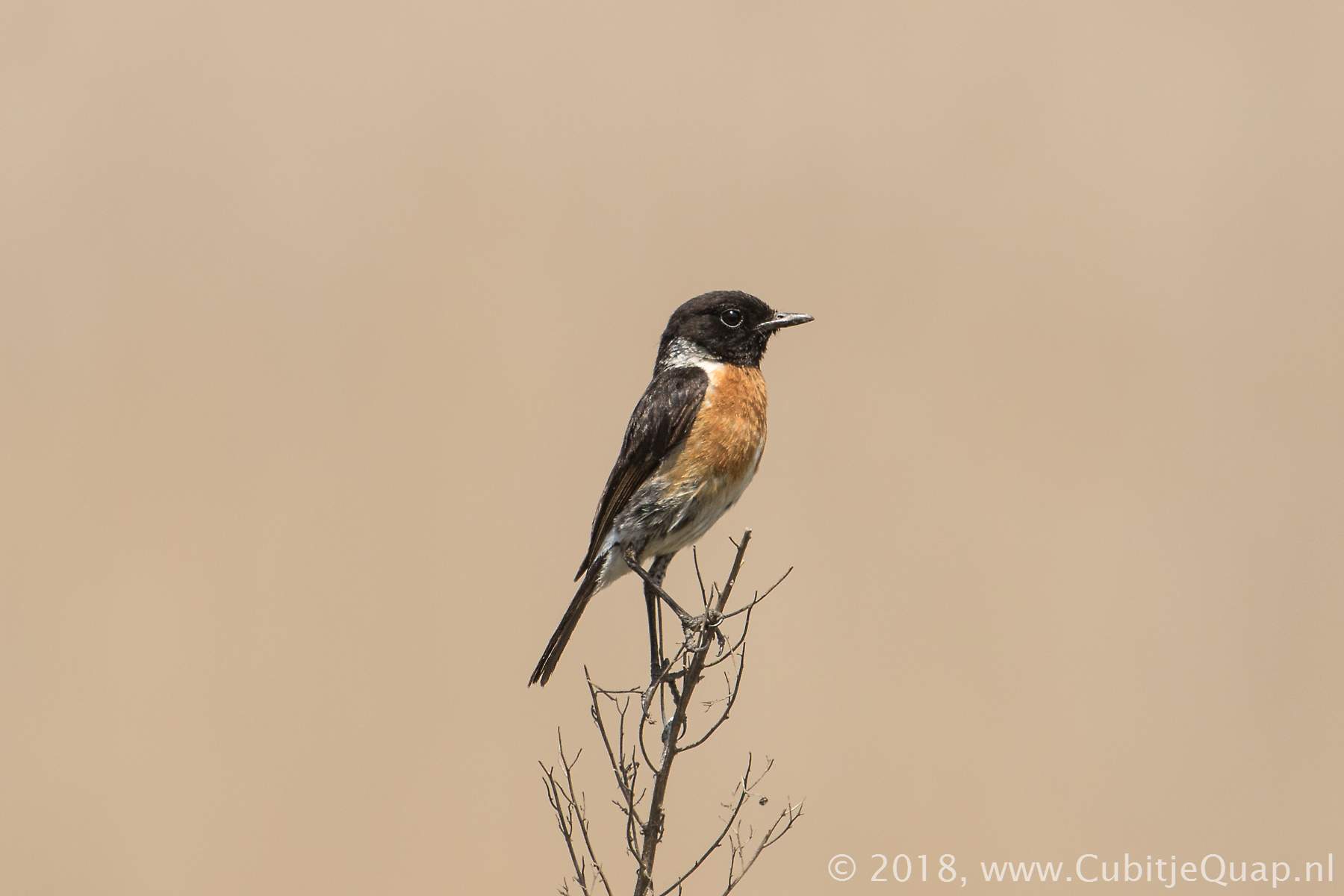Chats, wheatears and allies Information page
Description
Solitary, largely terrestrial passerines,often perching conspicuously on rocks, boulders, shrubs and small trees. They often flick their wings a few times after landing.They are monogamous, nest an open cup of shredded grass, twigs, rootlets, hair etc.. The nest can be places in various spots: ground, bush, tree or even underground hole. Clutch of 2 - 3 eggs with variable coloration from bright, plain blue to whitish with reddish and brown speckling. Incubation is dome by the female, care of young by both sexes.
Scientific names
Myrmecocichla = ant thrushOenanthe = a wheatear
Saxicola = stone inhabitor
Campicoloides = resembling a wheatear
Thamnolaea = bush thrush
Chats
Chats are insectivorous, hopping along and gleaning from ground vegetation, rocks or the ground itself. Some may dig with the bill for termites and most may attempt to flush prey by flicking or spreading the wings when foraging. They generally prefer dryer habitats where they feed mostly on the ground.Stonechats
These birds may mimic the calls of other species. They often flick the wings and tain while foraging or when prominently perched.Food is mainly procured while still-hunting from perches. They drop onto invertebrates or small vertebrates on the ground and then return to the perch to eat.. Thye will also khawk prey aerially or briefly hover to glean prey items.. If opportunity presents itself, they may also eat some fruits and seeds.
Wheatears
Wheatears have stromgly patterened tails. They prefer more arid habitats, where they are often attracted to burnt areas in search of dead or fleeing invertebrates, most of which are captured on the ground by using a dash-and-jab technique.. They may also use sallies to hawk flying insects, from the ground or a perch. They may also adopt hover-gleaning from foliage.Interesting links
Wikipediafatbirder.com

